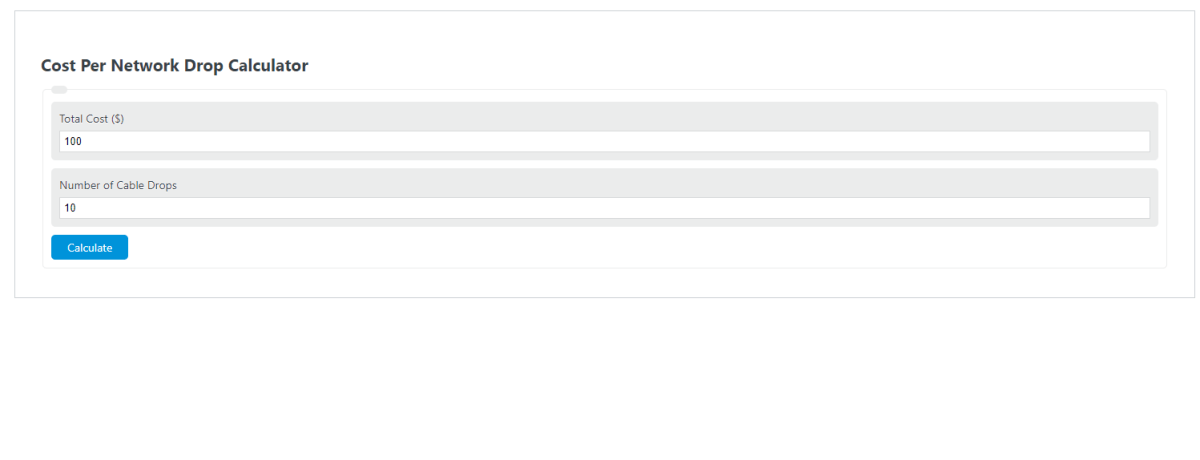Enter the total amount of cable drops and the total cost into the calculator to determine the cost per network drop.
- Access Point Calculator
- 95th Percentile Bandwidth Calculator
- Bit Error Rate (BER) Calculator
- Cost Per Query Calculator
Cost Per Network Drop Formula
The following equation is used to calculate the Cost Per Network Drop.
CPND = TCC / CD
- Where CPND is the cost per network drop ($/cable)
- TCC is the total cost of the cable drops ($)
- #CD is the number of cable drops
To calculate the cost per network drop, divide the cost of cable drops by the number of drops.
What is a Cost Per Network Drop?
Definition:
A cost per network drop is defined as the total cost to drop a cable for a network. This depends on the drop length and the number of wires.
How to Calculate Cost Per Network Drop?
Example Problem:
The following example outlines the steps and information needed to calculate the cost per network drop.
First, determine the cost of all drops in the network. In this example, the cost is $1,000.00.
Next, determine the number of drops. In this example, the number of cable drops is 2.
Finally, calculate the cost per network drop using the formula above:
CPND = TCC / #CD
CPND = 1000 / 2
CPND = $500.00 / drop
FAQ
What factors can affect the cost per network drop?
The cost per network drop can be affected by several factors including the length of the cable required for each drop, the type of cable used (e.g., Cat5e, Cat6), the complexity of the installation (e.g., walls, ceilings, conduits), and the labor costs associated with the installation.
Is it more cost-effective to have more network drops installed at once?
Generally, it can be more cost-effective to install multiple network drops at once due to economies of scale. Bulk installations can reduce the overall cost per drop as the fixed costs (such as labor for setup and travel) are spread out over more installations. However, this can vary based on the specifics of the project and the pricing structure of the service provider.
How can I reduce the cost per network drop?
To reduce the cost per network drop, consider planning for future needs and installing additional drops during initial installation to avoid the higher costs of subsequent installations. Choosing a simpler cable route and opting for a cable type that meets but does not excessively exceed your needs can also help manage costs. Additionally, obtaining multiple quotes from contractors and negotiating rates can lead to savings.
